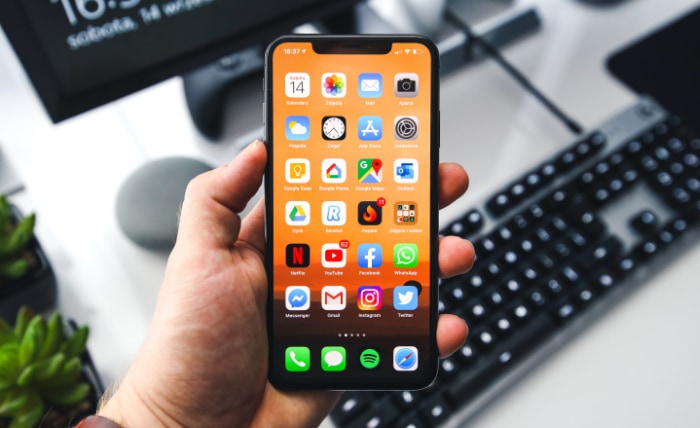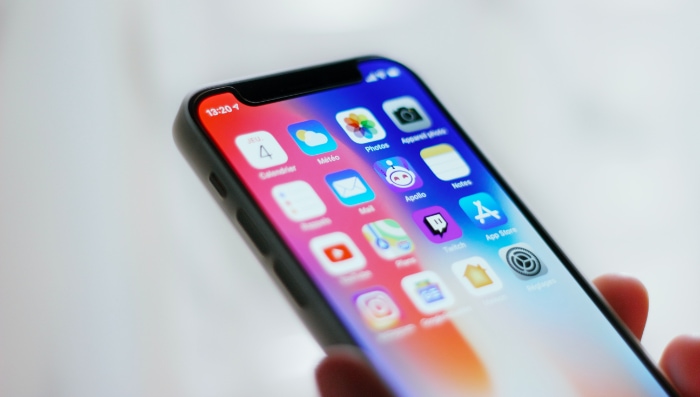iPhone Storage Not Loading or Showing: Solutions

Storage issues on iPhones are more common than we would like to admit. With a wide range of applications, photos, and files that we store on our devices, it is essential to have an accurate understanding of the available storage space.
However, at times, iPhone users may encounter a situation where their storage space is not displayed correctly, leading to confusion and inconvenience.
In this blog, we aim to provide a comprehensive overview of the causes, solutions, and prevention methods related to iPhone storage not showing.
By understanding the underlying issues and implementing the suggested solutions, you can ensure a seamless iPhone experience and avoid potential data loss or other complications.
Common Causes of iPhone Storage Not Showing
We'll explore some of the most common reasons why you might experience issues with your iPhone storage not loading or showing correctly. By understanding these potential causes, you can take steps to prevent future issues and troubleshoot existing problems.
iOS Update Issues
One of the primary reasons for iPhone storage not showing correctly could be related to iOS updates. Sometimes, a recently installed update may contain bugs or glitches that can impact the storage display.
In other cases, a pending update might be causing conflicts with the current version, leading to inaccurate storage readings.
Update Bugs and Glitches
- Unresolved issues in new iOS releases
- Conflict with existing apps and settings
Pending Updates
- Outdated iOS version
- Compatibility issues with apps and services
Incomplete or Interrupted Data Sync
When syncing data between your iPhone and other devices or cloud services, an incomplete or interrupted process can cause discrepancies in storage display. This could happen due to a weak internet connection, abrupt disconnection of devices, or software errors during the syncing process.
Weak Internet Connection
- Unstable Wi-Fi or cellular data
- Inaccurate storage calculation due to unsynced data
Abrupt Disconnection
- Unplugging the device during sync
- Inconsistent data leading to incorrect storage readings
Corrupted Files or Apps
Corrupted files or applications can cause various issues on your iPhone, including storage not showing. These corrupt files may result from a faulty download, malware, or software conflicts, which can lead to incorrect storage calculations.
Faulty Downloads
- Incomplete app or file downloads
- Impact on storage calculation
Malware and Software Conflicts
- Malicious software affecting storage readings
- Conflicts with other apps or system files
Cache or Temporary Files
As you use your iPhone, cache and temporary files are created by apps and the operating system to store data temporarily. Over time, these files can accumulate and consume a significant amount of storage.
However, the storage consumed by these files may not be accurately displayed, resulting in discrepancies.
App Cache
- Storage occupied by temporary app data
- Inaccurate display of storage usage
System Cache and Temporary Files
- Storage consumed by temporary system files
- Impact on storage readings
Hardware Malfunction
Although rare, hardware issues with your iPhone's storage components can lead to storage not showing correctly. Physical damage, manufacturing defects, or wear and tear can affect the device's ability to read and calculate storage accurately.
Physical Damage
- Impact of drops or accidents on storage components
- Inaccurate storage readings due to damaged hardware
Manufacturing Defects and Wear and Tear
- Storage issues arising from production flaws
- Impact of long-term usage on storage calculation accuracy
How to Resolve iPhone Storage Not Showing Issues
We'll outline some effective solutions that you can try if you're experiencing issues with your iPhone storage.
Restart Your iPhone
Sometimes, a simple restart can resolve storage display issues on your iPhone. Performing a soft can refresh the system and potentially fix any temporary glitches affecting the storage reading.
Soft Reset
- Press and hold the side button and volume button
- Slide to power off when prompted
- Wait for 30 seconds, then press the side button to power on the device
Update to the Latest iOS Version
Ensuring your iPhone is running the latest iOS version can help resolve storage display issues resulting from software conflicts or bugs.
Check for Updates
- Open Settings > General > Software Update
- Review the available updates, if any
Install the Update
- Tap “Download and Install” to start the update process
- Make sure to connect to Wi-Fi and have sufficient battery life during the update
Clear Cache and Temporary Files
Removing cache and temporary files can help resolve storage display issues caused by an accumulation of unnecessary data.
Use Built-in Settings
- Clear Safari cache: Settings > Safari > Clear History and Website Data
- Offload unused apps: Settings > General > iPhone Storage > Offload Unused Apps
Third-Party Cleaning Apps
- Research and download reputable cleaning apps from the App Store
- Use these apps to clear cache and temporary files from your device
Remove and Reinstall Corrupted Apps
Identifying and reinstalling problematic apps can help resolve storage issues caused by corrupted applications.
Identify Problematic Apps
- Monitor app behavior for crashes or freezes
- Check the app's reviews and recent updates for reported issues
Delete and Reinstall from App Store
- Press and hold the app icon, then tap “Remove App” to delete it
- Open the App Store, search for the app, and reinstall it
Check for Hardware Issues
If none of the above solutions work, it's essential to inspect your iPhone for hardware issues that may be causing storage display problems.
Inspect for Physical Damage
- Examine your iPhone for visible damage or deformities
- Consider visiting an Apple Store or authorized service provider for a professional assessment
Consult an Apple Technician or Authorized Service Provider
- Schedule an appointment for a diagnostic test
- Follow the technician's recommendations for repair or replacement, if necessary
How to Prevent iPhone Storage Not Showing Issues

We'll provide some tips on how to avoid these issues altogether and keep your iPhone running smoothly.
Regularly Update iOS and Apps
Keeping your iPhone's software up-to-date can help prevent storage display issues caused by software conflicts or bugs.
Enable Automatic Updates
- Navigate to Settings > General > Software Update > Customize Automatic Updates
- Enable “Download iOS updates” and “Install iOS updates” options
Update Apps Regularly
- Open the App Store and tap on your profile icon
- Scroll down to view available app updates and tap “Update All” to install
Monitor Storage Usage
Regularly checking your iPhone's storage usage can help you identify any discrepancies or potential issues early on.
Review Storage Breakdown
- Navigate to Settings > General > iPhone Storage
- Analyze storage usage by app and file type
Delete Unnecessary Files and Apps
- Remove unwanted apps, photos, videos, and other files to free up storage
- Consider using cloud storage services to store files and save space on your device
Keep Apps and Files Organized
Maintaining a well-organized iPhone can help you easily identify and address storage issues.
Arrange Apps in Folders
- Group similar apps together in folders for easy navigation
- Regularly review and declutter your app collection
Organize Files in Dedicated Apps
- Use dedicated apps, such as Photos, Files, or Notes, to manage different types of files
- Regularly review and organize files to prevent clutter and simplify storage management
Be Cautious of Suspicious Links and Attachments
Malware or corrupted files can cause storage display issues. Protect your iPhone by being cautious with links and attachments.
Exercise Caution with Links
- Avoid clicking on unverified links from unknown senders in emails or messages
- Use security software to scan for malware or other threats
Be Wary of Email Attachments
- Avoid downloading attachments from unknown senders
- Scan attachments for malware or viruses using security software, if possible
Perform Regular Backups
Backing up your iPhone data regularly can help prevent data loss in case of storage issues or other problems.
Use iCloud Backup
- Enable iCloud Backup in Settings > [your name] > iCloud > iCloud Backup
- Ensure your device is connected to Wi-Fi and charging during the backup process
Backup to iTunes or Finder (macOS Catalina and later)
- Connect your iPhone to your computer
- Open iTunes or Finder, select your device, and click “Back Up Now”
Conclusion
In conclusion, understanding the causes and potential solutions for iPhone storage not showing issues is essential for maintaining a seamless user experience.
By keeping your iOS and apps up-to-date, monitoring storage usage, organizing apps and files, exercising caution with links and attachments, and performing regular backups, you can minimize the risk of encountering storage display problems.
By following the outlined solutions and preventative measures, you can ensure that your iPhone continues to function optimally and safeguard your valuable data.
We encourage you to share your experiences and additional solutions in the comments section, fostering a community of informed and proactive iPhone users.


